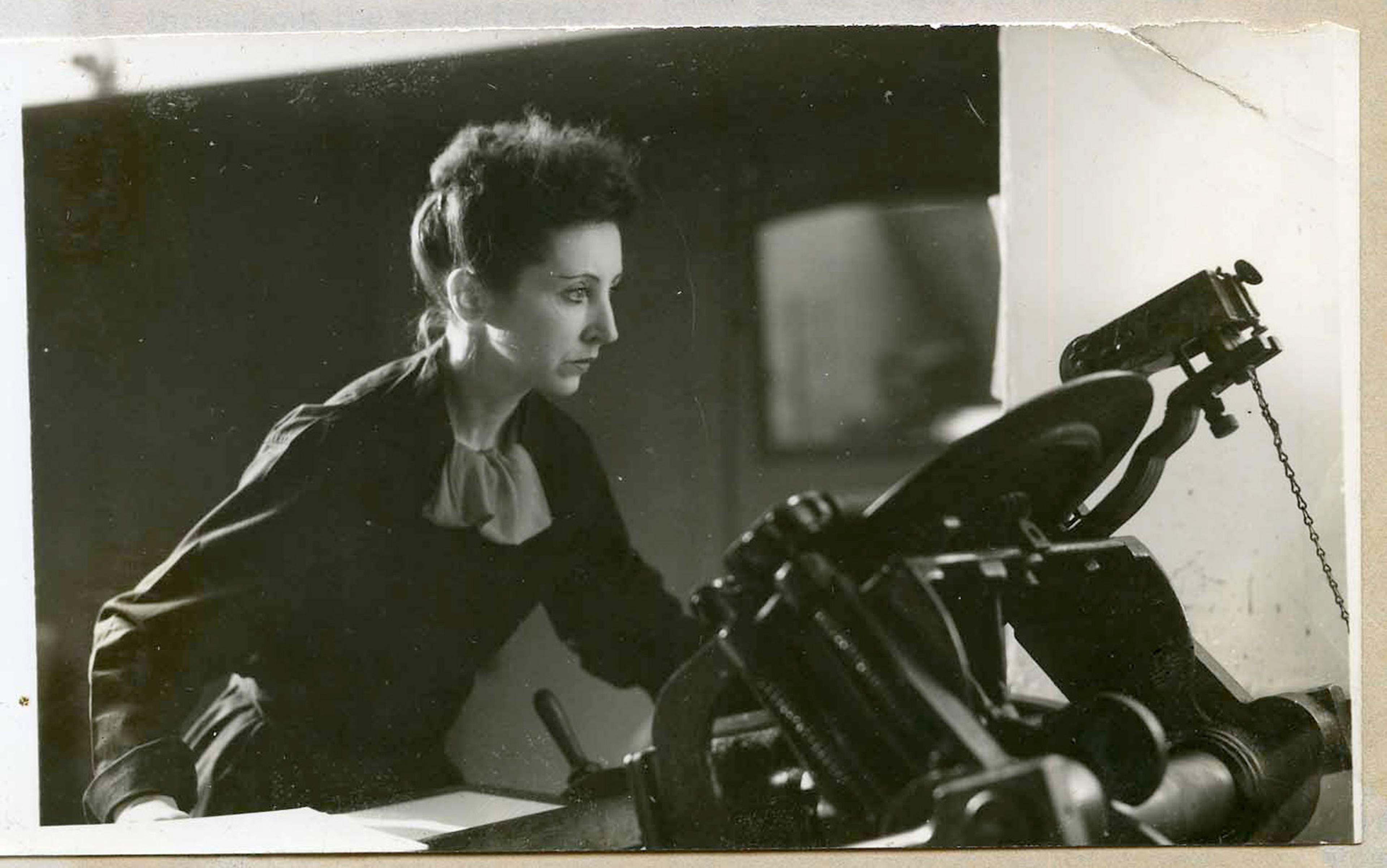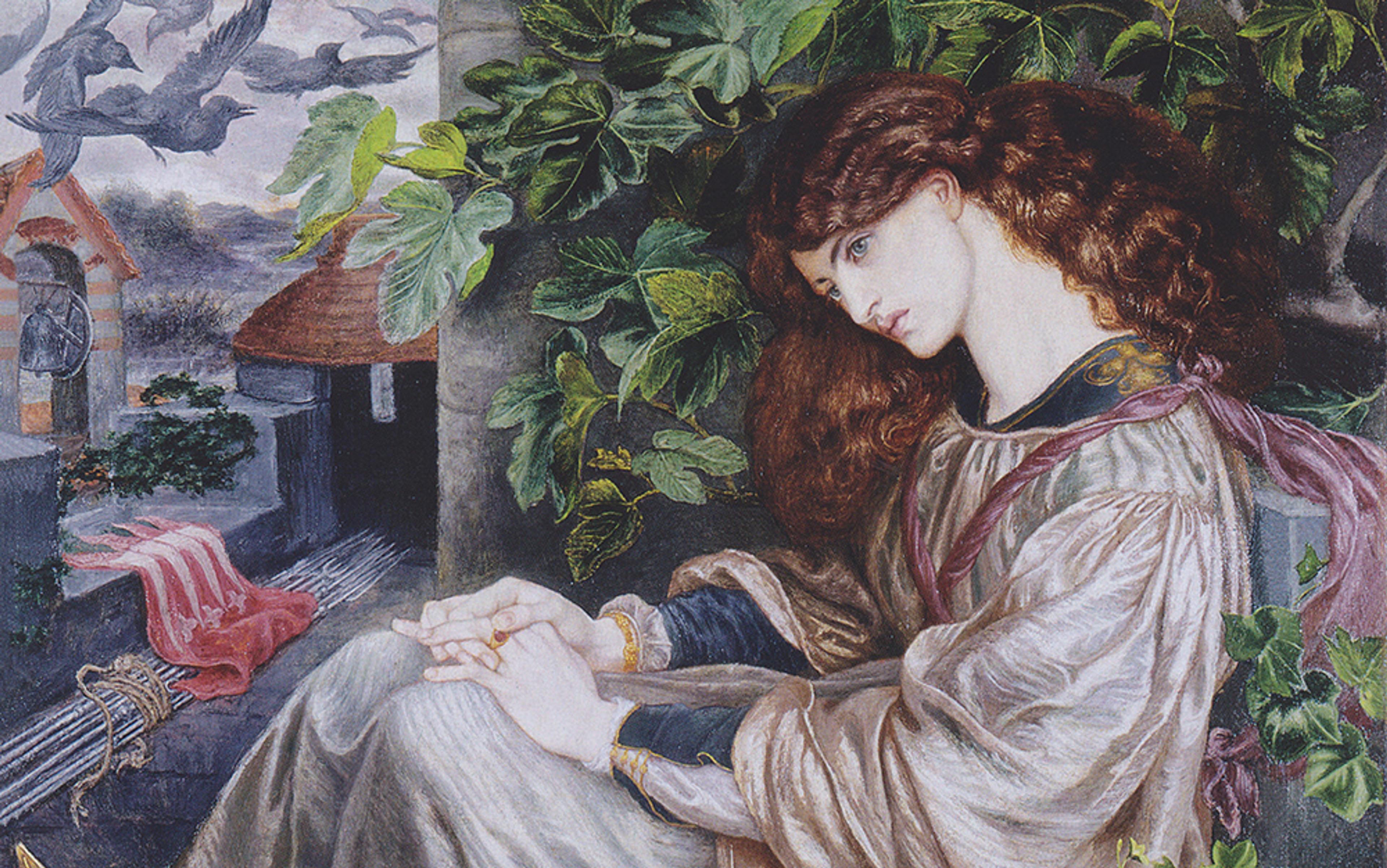In his essay ‘Uncritical Reading’ (2004), the Yale English professor Michael Warner writes about the way that universities break students of disreputable reading habits. When students first enter the classroom, he writes:
They identify with characters. They fall in love with authors… they shop around among taste-publics, venturing into social worlds of fanhood and geekdom… Their attention wanders; they skim; they skip around. They mark pages with pink and yellow highlighters. They get caught up in suspense. They laugh; they cry. They get aroused (and stay quiet about it in class). They lose themselves in books, distracting themselves from everything else, especially homework like the reading I assign.
The kind of reading that Warner describes his students bringing in from outside the classroom – excessive, feelings-y, full-body reading – is often associated with reading for pleasure, gobbling up genre fiction such as horror and romance on a lunch break or in the bath; getting the shivers, getting aroused, weeping, the glow from a happy ending. These aren’t pleasures of the classroom. They aren’t for serious literature.
As the literary critic Eve Kosofsky Sedgwick put it in her essay ‘Paranoid Reading and Reparative Reading’ (2002), students are taught instead to master what Paul Ricoeur termed ‘the hermeneutics of suspicion’. ‘Hermeneutics’ (from the Ancient Greek for ‘translating’) denotes a method or system of interpretation, a way of finding out something. Students are taught to take an objective, almost hostile attitude to a text, to pick it to pieces and investigate it like a crime. They must not love it too much.
The hermeneutics of suspicion is built on centuries of philosophical and pedagogical ideologies that separate body and mind, then rank the mind above the body. As feminist critics have pointed out, these are sexist ideologies, because they associate the mind, in all its rational dimensions, with men, and the body with women, effeminacy and femininity. Indeed, universities were largely closed to women until the 20th century, in part because male academics claimed that women were incapable of distancing their emotions from their thinking. Generations of women had to prove themselves in the academy by being more rational, more clinical, more careful about how they showed emotion to male colleagues; only in the 1970s did feminist critics in Paris such as Luce Irigaray and Hélène Cixous – whose work influenced Sedgwick and Warner – begin to question the assumption that bodies and feelings had no place in literary criticism.
Growing up, I loved books. I loved them so much that I went to graduate school to study them, and I didn’t read a novel for five years. One of the terrible secrets about attending graduate school in literature is that it can ruin your ability to read for pleasure; pick up a book, and a nasty voice whispers that you should be reading something serious – or reading something seriously. So in the classroom, I learned to put away my body. Outside of the academy, however, specifically through fanfiction, I was learning to read with it.
I discovered fanfiction in 2001, when I was 16, unhappy at school, and frequently mistaken for a boy in women’s bathrooms. I’d joined a number of web mailing listservs, desperate to make friends, and I remember vividly the first time one of the fanfiction writers I followed posted a story she’d written about a character from The Lord of the Rings. I was staggered. It was like nothing I’d ever read before. Suddenly, I had a word for a genre that I had known intimately for years.
I’d always fantasised about stepping into books and having adventures with my favourite characters. Now I wrote them down and shared them. Strangers left positive comments on each chapter. I discovered that I could write. Later, I learned that there was a name for this kind of story: ‘Mary Sue’. The name comes from the short satire ‘A Trekkie’s Tale’ (1973), written by the mathematician Paula Smith and first published in a Star Trek fanzine to parody the flood of (in her opinion) terrible fanfiction stories in which all-American teenagers with names such as Mary Sue stride into the world of the Starship: Enterprise and win Captain Kirk’s fickle heart. Smith’s parody is embarrassingly similar to my first story, and thousands like it online, written by young women experimenting with fanfiction. But as I read more widely, I discovered a rich vein of sophisticated and brilliantly written fanfiction, offering insights into characters I knew and loved.
While bingeing on Harry Potter fanfiction, I was taking courses at high school, then university, in classical and medieval literature. I learned Latin, and read Virgil, Cicero and St Augustine in the original language. I wrote cold, sober, critical essays, but stayed up late into the night with fanfiction, my guilty pleasure, seemingly as far removed from the study of literature as it was possible to be. I moved to Canada to go to graduate school. By then I knew that fantasising about meeting Geoffrey Chaucer, or imagining what Queen Eleanor of Aquitaine might do if she met Sir Lancelot, was not the way serious readers did it. But I struggled with cognitive dissonance, since it was obvious to me that fanfiction had made me good at reading.
Fanfiction makes its source texts richer for its loving readers. It amplifies allusions and hidden currents, pulls out notes of characterisation and subtleties of plot, and spends time with them. After reading fanfiction, I return to texts I love with a new eye – sometimes a more critical one. For example, I read hundreds of stories embroidering the relationship between the Harry Potter characters Remus Lupin and Sirius Black, which – fanfiction writers suggested – was the real reason Sirius’s family had thrown him out. Thanks to fanfiction, I was wondering ‘Where are all the gay people at Hogwarts?’ long before J K Rowling announced that Dumbledore was gay (but his first crush was an evil wizard, and he apparently never loved again – thanks, JK).
Fanfiction can fill gaps in the world of the story, or tease out elements forbidden or unspeakable in the original text and bring them to the surface. These might be erotic; Fifty Shades of Grey (2011) began life as a hugely popular erotic fanfiction of the Twilight series that reimagined its characters Bella and Edward in an office BDSM setting. E L James brought out an element of Twilight that many readers found appealing – the erotic power dynamics between Edward and Bella – and rewrote those dynamics for a commercial audience. Another example is slash fiction – fanfiction that imagines a gay romance into a straight narrative, like those Remus/Sirius stories I binged on (the name ‘slash’ comes from the /).
Slash is particularly powerful for me as a queer woman because it subverts some fundamental assumptions in media narratives about who is watching, and what they want. When I read slash, I feel recognised and loved as a reader in a way I almost never do when I watch TV. In fact, fanfiction gave me something I’d been craving; it was literature for me. Though I’ve always loved science fiction, I felt obscurely unwanted by books in which the female characters were unsatisfying and marginalised: women are barely imagined as part of the science fiction audience, let alone catered to. By the same token, romance novels (one of the few genres that almost exclusively caters to women) were overwhelmingly heterosexual, with male and female characters I found boring and unrelatable, moving through prescribed motions that always ended with marriage and babies. Reading romance novels felt like forcing myself into a too-tight corset: reading fanfiction was like taking a deep breath.
In spite of my creeping doubts about the wisdom of dismissing fanfiction from the academy, in grad school I immersed myself in centuries-old religious texts written under the sway of an authoritarian cultural monolith: the medieval Catholic Church. There, in the midst of those studies, I encountered a medieval text that made me reconsider my embarrassing love of fanfiction, and totally changed the way I thought about reading.
The Book of Margery Kempe is often called the first autobiography in English. It purports to be the memoirs of an upper-middle-class woman from a mid-sized English town in Norfolk in the early 15th century. Kempe, the daughter of a mayor and wife of a wealthy merchant, had a religious epiphany as an adult and began experiencing visions after the birth of her first child (she eventually had 14). Kempe gradually drew away from her husband and began living the life of a wandering mystic. She made numerous pilgrimages – to Canterbury, Rome, Jerusalem, Aachen – causing controversy wherever she went. Partly this was because, as her autobiography makes clear, people found her very annoying. She saw the death of Christ vividly before her eyes during mass, and disrupted church services with wailing and weeping.
Kempe’s religiosity was intense and frightening. At one point in her memoirs, a priest tells her to calm down: ‘Lady, Jesus is dead long since.’ (‘Damsel, Jhesu is ded long sithyn.’) She replies: ‘Sir, hys deth is as fresch to me as he had deyd this same day, and so me thynkyth it awt to be to yow and to alle Cristen pepil.’ She wasn’t cowed by authority. Arrested under suspicion of preaching heresy (a double crime, since women were forbidden from preaching), she was brought before the archbishop of York and impressed him enough that he gave her a licence to wear the costume of a holy virgin (despite still being married) and to continue her ‘comownycacyons’ (‘dialogues’ or ‘chats’) about God with the men and women she met. Then she told him off for arresting her. She kicked a lot of wasp’s nests and lived to get her story written down in her old age, at a time when religious dissent often met a grisly end.
I began to suspect that dismissals of fanfiction might equally be based in ideologies that I had swallowed whole
The Book of Margery Kempe is now recognised as hugely important evidence for the influence and involvement of women in late-medieval English religion. But for decades (the Book was discovered only in 1934) it flummoxed modern readers, spawning embarrassment and a desire to dismiss or pathologise. Kempe has been posthumously diagnosed with all kinds of mental disorders, from severe post-natal depression to schizophrenia, which accords with a refusal to take her seriously as a mystic or theologian. The historian David Knowles wrote in The English Mystical Tradition (1961) that Kempe’s mystical experience emerged from ‘the vivid imagination and retentive memory of a sincere and devout, but very hysterical woman’. Twenty years later, the literary scholar Donald Howard claimed that Kempe was ‘quite mad – an incurable hysteric with a large paranoid trend’.
But the first time I read The Book of Margery Kempe, I was struck by recognition. Her visions, although religious in content, are very similar in form and in feeling to my Mary Sue stories. As I read work by feminist scholars, pointing out the sexism of Kempe studies, I began to suspect that dismissals of fanfiction might equally be based in ideologies that I had swallowed whole.
Kempe imagines herself into the Gospels as a speaking character, interacting with the Holy family and the disciples, in her own fanfiction of Christ’s crucifixion. In a strangely compressed, time-travelling narrative, she works as a nursemaid for Mary’s mother, helps Mary raise the baby Jesus, and offers her a shoulder to cry on at the crucifixion. Kempe’s account is full of homely details that make it feel real and immediate; when Mary is worn out from weeping after the crucifixion, Kempe describes how she ‘made for our Lady a good hot drink and brought it to her to comfort her’, but Mary, distraught, responds: ‘Do it awe, dowtyr. Geeve me no mete but myn owyn childe.’
Her relationship with Christ is romantic, even erotic. Though it was commonplace to describe a nun’s union with God in the Middle Ages as a marriage, Kempe took the idea to extremes, imagining herself speaking the wedding vows with Jesus before a congregation of the Holy Trinity, Mary, the 12 apostles and a crowd of saints and angels. ‘Dowtyr…thu mayst boldly, whan thu art in thi bed, take me to the as for thi weddyd husbond, as thy derworthy derlyng,’ Jesus tells her.
We tend to imagine medieval religion as an austere, ordered affair: monks chanting as they pray away the hours, copying books and making cheese. Kempe, by contrast, is so physical, so crude, so over the top. She apparently had a modest following while she was alive, and her book was written down and preserved by monks in a Yorkshire monastery. An abridged version, produced in the 16th century suggests it had a wider, more popular, circulation. Although many of her contemporaries, like modern scholars, found Kempe embarrassing, annoying, even ridiculous, she was participating in a form of Christian mysticism that thrived in western Europe from the 12th to 15th centuries, sometimes called ‘affective piety’ (‘affect’ means, broadly, ‘physical expressions of feeling’).
The idea that women’s earthiness and materiality make them incapable of higher thought is a very old one. It was certainly dominant in the Middle Ages. That doesn’t mean that men naturally read in a cold and objective way, and women naturally read in an excessive and emotional way – rather that masculinity and femininity were assigned to the two reading styles, and men and women did both, sliding between gender categories depending on the effect they wanted to achieve, or the space they wanted to inhabit. For this reason, affective piety was particularly associated with women.
Affective piety required readers to use their imaginations to supplement Bible stories they heard or read. Thus, adherents visualised Christ in his death throes, or as an infant, so as to feel sorrow and ecstasy, and that feeling was itself a form of prayer. It was pleasurable, yes, to imagine a romance with Jesus; but it also helped readers intensify and expand their love of God, so they might understand it and themselves better.
Many religious women cut off from higher education and ecclesiastical authority sought a route to knowledge of God that bypassed official training in theology and Latin; anyone could cry, after all. In Holy Feast and Holy Fast (1987), an important work on the history of medieval religion, the feminist historian Caroline Walker Bynum showed that medieval women exploited stereotypes of their own physicality to claim a special relationship with Jesus and the Virgin Mary using imagery of breastfeeding and childbirth.
Some medieval monks also embraced this ‘feminine’ style of reading for a variety of reasons: to deal with their own complicated relationship to masculinity, or to feel a more emotional connection with God. Radicals also took it up in resistance to the idea that true interpretation of the holy scriptures was possible only in Latin. The affective piety movement was one of many cogs in the wheel’s slow-motion turn against the power of the Catholic Church, which eventually found one outlet in the Protestant Reformation. The Book of Margery Kempe challenges what it meant to critically engage with a text. Amid Kempe’s loud weeping and marriage ceremonies with Jesus, there was her rebuke to the priest about his closed-mindedness, her challenge to the Archbishop of York about his hypocrisy, and an assertion that she – an illiterate woman – had the right to teach others what the Bible meant.
Reading The Book of Margery Kempe alongside fanfiction makes it clear that physical, imaginative reading is still associated with women, still considered embarrassing, and still employed as a form of resistance to mainstream narratives. People, in short, are still using this style of reading to elbow their way into texts from which they are restricted, just as Kempe and other women did with religious texts.
Just as important, Kempe’s Book argues that writing is also reading – transforming other texts, enriching them for readers – and it evidences a long intertwined history of women’s education with alternative literacies of power and resistance. Through Kempe, I came to realise that fanfiction, qualitatively so different from the literary criticism I learned in the classroom, is itself a powerful critical tool. My fanfiction community gave me a healthy disrespect for the ‘author’ in ‘authority’, teaching me to notice where a text dissatisfied me and to dig deep into my own feelings to work out why. I learned that identifying with characters can be valuable. Indeed, my identification with Kempe helped me notice something about her mysticism that hadn’t previously been studied: the importance of ‘Mary Sue’-style self-insertion into Bible stories, which formed the starting point of my PhD dissertation.
The most important thing I learned from fanfiction was personal – although I don’t divide the personal and the scholarly so much these days
Most of all, Kempe’s story underscores how often the work of feminist and queer historians is to find ourselves in the past. After completing her PhD on lesbianism in 19th-century literature, searching out the lost traces of gay women, the English novelist Sarah Waters was emboldened to start writing those forgotten lives into existence. Waters chose to write fiction instead of scholarship, in a sense taking the fanfiction route. Her article ‘Making Up Lost Time’ (2000) co-written with Laura Doan, professor of cultural history and sexuality studies at the University of Manchester, suggests that fiction ‘offers fantasy and wishful thinking as… necessary correctives or missing links to the impoverished lesbian archive’. The implication is that academic methods go only so far.
Yet I have seen that boundary shift since I began graduate school. The economic recession and subsequent funding crisis in the humanities has accelerated a process that had already begun. Namely, that scholars are reconsidering empathy and imagination as tools for teaching and study amid discussions of how to keep the humanities relevant. There is a new belief that objectivity in literary criticism is not only undesirable but impossible. Increasingly, graduate students are trained not to avoid saying ‘I feel…’, and to consider how their own bodily experiences, inflected by gender, race, sexuality and class, shape their interactions with literature.
Now a teacher myself, I always begin by asking students how they feel. I’m hoping that, like Warner’s hypothetical students, they’re not ashamed of how they read for pleasure, so I urge them to refine and sharpen tools they already own. The most important thing I learned from fanfiction, I tell them, was personal – although I don’t divide the personal and the scholarly so much these days. I learned to take pleasure in texts that didn’t care about me, and that ability to resist narrative and turn it to what I wanted gave me the courage to mentally step outside norms of gender and sexuality that I thought I couldn’t escape. I came out halfway through my PhD, met my wife and changed my dissertation topic to start writing about fanfiction. Consciously, I brought my body – and my heart – back into my university work.






